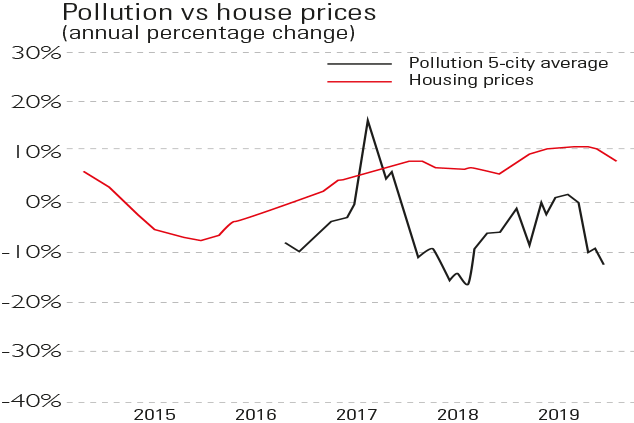
Trying to gauge the state of the Chinese economy is often like peering through smog; official statistics are widely deemed unreliable. But smog itself, or rather the absence of it, backs up other recent signs that growth has come off the boil, as Nathaniel Taplin points out in The Wall Street Journal.
Air pollution correlates best with the “housing-driven heavy industry sector”. Pollution levels in five major cities climbed along with the “last two big run-ups” in house prices in early 2017 and late 2018.
Pollution levels are “now trending sharply lower again”. The PMI survey tracking construction is down sharply year-on-year, and overall house price growth has eased to an annual pace of 8%, compared with 11% in mid-2019.
Viewpoint
“Data covering… trucks [and] chemical tankers… indicate real problems in the industrial economy. Manufacturers seem to have little faith consumers will keep buying at the rates they are. And, given how much consumer spending is debt-financed, they’re probably right to be cautious. Strong retail spending is not necessarily positive. Consider this… from a report from November 2007. ‘The Friday after Thanksgiving is known for heavy spending in retail stores, but it’s clear that consumers are increasingly turning to the internet to make their holiday purchases… Online spending on Black Friday has historically represented an early indicator of… [the] rest of the season… That the 22% growth rate versus last year is outpacing the overall growth rate for the first three weeks of the season [is] a sign of positive momentum.’ The Great Recession began one month [later].”
John Mauldin, Mauldin Economics